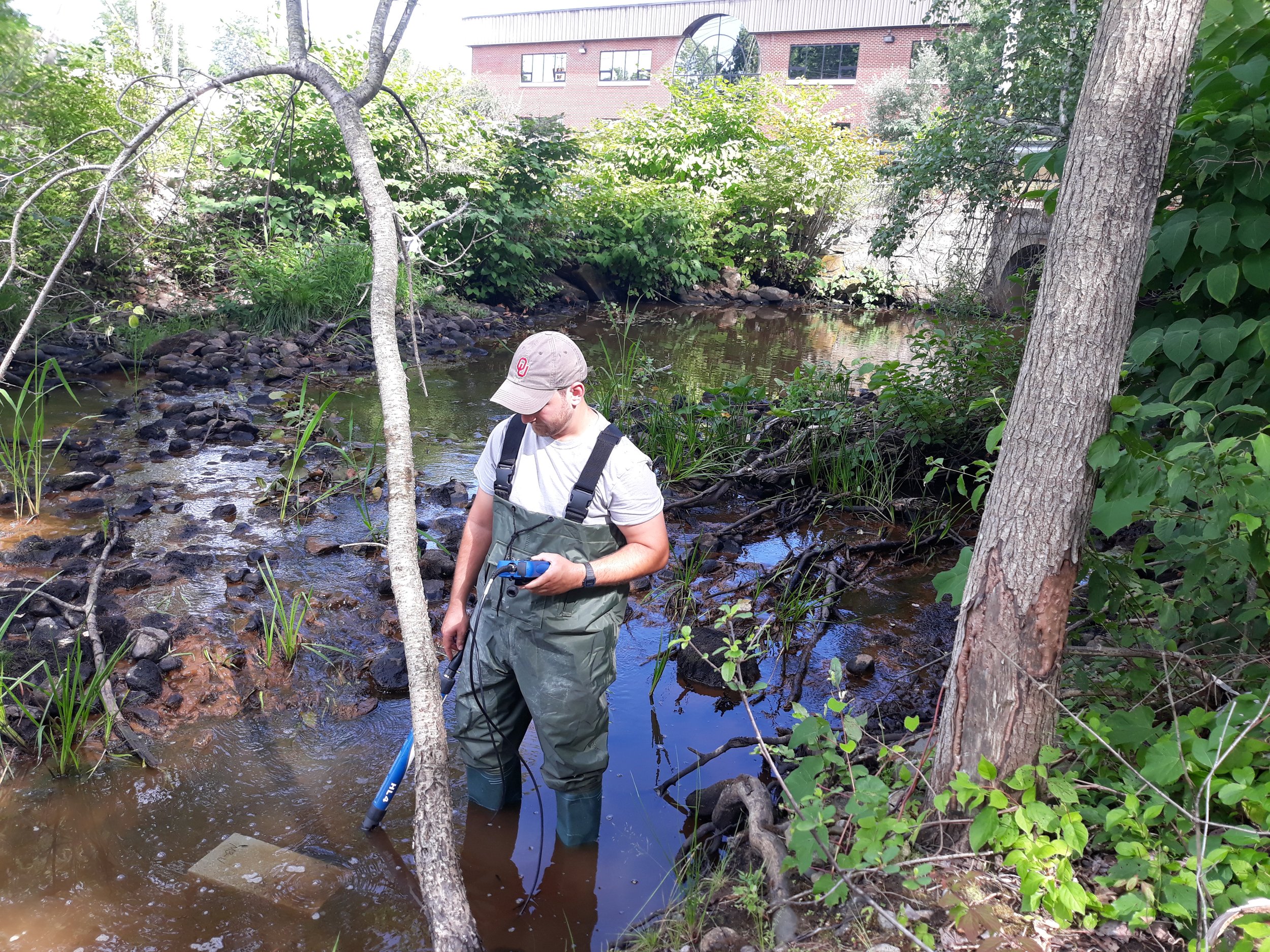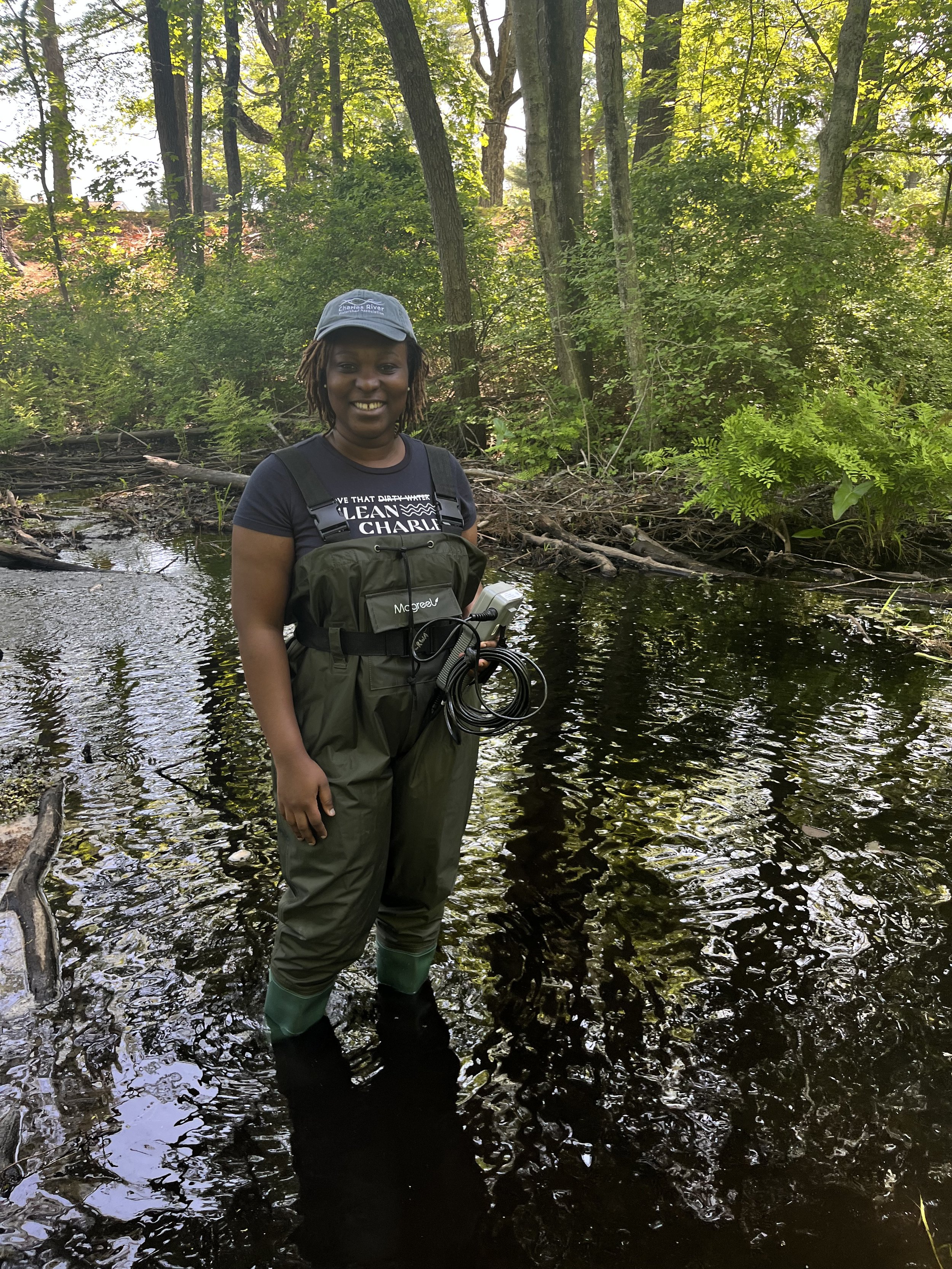
CHLORIDE MONITORING PROGRAM
Tracking Road Salt Impacts
While salting roads in winter makes travel safer in New England’s snow, it has adverse impacts on plants and wildlife in our rivers and streams.
High amounts of salt can damage infrastructure, pollute freshwater systems, and kill freshwater fish and plant species.
When high amounts of sodium chloride, the most common ingredient used for de-icing roads, enter a freshwater system, it increases the natural salinity of the water. This is harmful to fish and other aquatic organisms.
Road salt can also adversely affect groundwater. Both public and private wells in Massachusetts have been contaminated by road salt runoff.
In 2023, Boston kept more than 44,000 tons of road salt on hand to prepare for winter weather. If we are going to preserve the Charles River and the wildlife that lives within it, we need to understand how chloride is affecting our rivers and streams.
Data in Action:
The EPA has established a concentration threshold for chloride to protect freshwater aquatic life. Beginning in the summer of 2022, CRWA began monitoring in-situ conductivity levels to assess chloride levels and the impacts of road salt in the tributaries of our watershed.
What does chloride monitoring look like?
Researchers use a conductivity sensor to record the conductivity in the water at a given instant. They log this information and use a MassDEP formula to convert the conductivity metrics to the amount of chloride present in the body of water.


